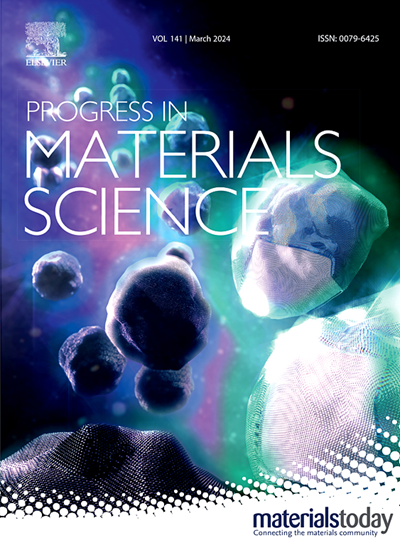Developing safe and high-performance lithium-ion batteries: Strategies and approaches
IF 40
1区 材料科学
Q1 MATERIALS SCIENCE, MULTIDISCIPLINARY
引用次数: 0
Abstract
Lithium-ion batteries (LIBs) as an effective low carbon technology provide a solution for achieving NetZero emissions, in line with the Sustainable Development Goals set by the United Nations. Research efforts have been devoted to increasing the energy density and efficiency of LIBs. However, large-scale deployment of LIBs is challenged by thermal runaway and safety problems, particularly under abusive conditions. To tackle this challenge, we must gain insight into the safety features of batteries and design durable strategies by fundamentally analyzing battery thermal runaway processes. In this review, we systematically summarize the abusive indicators that may trigger the thermal issues at the macroscopic level from thermal, chemical, and mechanical perspectives, and point out failure mechanisms that correlate with each component, e.g., cathode, anode, separator, electrolyte and current collector. Beyond material innovations, we emphasize the importance of optimizing industrial-scale manufacturing, integrating regulatory frameworks through advanced battery management systems, and enhancing safety engineering from an battery external perspective. Moreover, we systematically evaluate the contributions of theoretical and computational approaches to battery safety, critically comparing physics-based, machine learning, and hybrid models, and proposing targeted improvements. The broader implications of these safety strategies are considered in the context of environmental sustainability and recycling. Finally, we present design principles for safer, high-performance batteries and outline emerging research and industrial directions through a critical synthesis of thermal runaway mechanisms and mitigation strategies.
开发安全和高性能锂离子电池:策略和方法
锂离子电池(lib)作为一种有效的低碳技术,为实现零净排放提供了解决方案,符合联合国制定的可持续发展目标。研究人员一直致力于提高lib的能量密度和效率。然而,lib的大规模部署受到热失控和安全问题的挑战,特别是在恶劣条件下。为了应对这一挑战,我们必须深入了解电池的安全特性,并从根本上分析电池热失控过程,设计出耐用的策略。本文从热学、化学和力学的角度系统地总结了可能在宏观层面引发热问题的滥用指标,并指出了与阴极、阳极、分离器、电解质和集流器等各部件相关的失效机制。除了材料创新,我们还强调优化工业规模制造、通过先进的电池管理系统整合监管框架以及从电池外部角度加强安全工程的重要性。此外,我们系统地评估了理论和计算方法对电池安全的贡献,批判性地比较了基于物理、机器学习和混合模型,并提出了有针对性的改进。在环境可持续性和循环利用的背景下考虑这些安全战略的更广泛影响。最后,我们提出了更安全、高性能电池的设计原则,并通过对热失控机制和缓解策略的关键综合,概述了新兴研究和工业方向
本文章由计算机程序翻译,如有差异,请以英文原文为准。
求助全文
约1分钟内获得全文
求助全文
来源期刊

Progress in Materials Science
工程技术-材料科学:综合
CiteScore
59.60
自引率
0.80%
发文量
101
审稿时长
11.4 months
期刊介绍:
Progress in Materials Science is a journal that publishes authoritative and critical reviews of recent advances in the science of materials. The focus of the journal is on the fundamental aspects of materials science, particularly those concerning microstructure and nanostructure and their relationship to properties. Emphasis is also placed on the thermodynamics, kinetics, mechanisms, and modeling of processes within materials, as well as the understanding of material properties in engineering and other applications.
The journal welcomes reviews from authors who are active leaders in the field of materials science and have a strong scientific track record. Materials of interest include metallic, ceramic, polymeric, biological, medical, and composite materials in all forms.
Manuscripts submitted to Progress in Materials Science are generally longer than those found in other research journals. While the focus is on invited reviews, interested authors may submit a proposal for consideration. Non-invited manuscripts are required to be preceded by the submission of a proposal. Authors publishing in Progress in Materials Science have the option to publish their research via subscription or open access. Open access publication requires the author or research funder to meet a publication fee (APC).
Abstracting and indexing services for Progress in Materials Science include Current Contents, Science Citation Index Expanded, Materials Science Citation Index, Chemical Abstracts, Engineering Index, INSPEC, and Scopus.
 求助内容:
求助内容: 应助结果提醒方式:
应助结果提醒方式:


